This diagram:
shows an output stage that can be used to drive balanced lines. Here, it is used on a piece of audio equipment and connected to an XLR jack.
However, I want to make this "idiot-proof". If this is connected to a mixer and someone accidentally switches on phantom power, I'm afraid that this might fry the opamps on this stage. How would I go about implementing this type of protection? (The piece of equipment that I am designing is not phantom-powered; it's powered off the mains.)
My initial idea is to insert capacitors (10 μF bipolar electrolytic) between the opamps' outputs and the output resistors (R4 and R5, which are to prevent oscillation) and then put a pair of back-to-back Zener diodes between the opamps' outputs and signal ground. Would this work?
